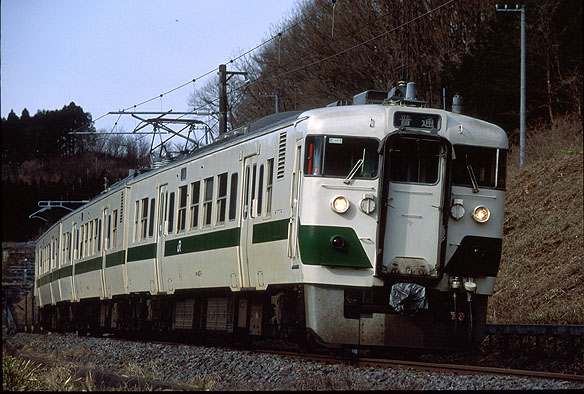Japanese National Railways (JNR) developed 417 series vehicles in order
to relieve overcrowding commuter trains operated by the train applying
concentrated traction system in rural area. 417 entered the service in
1977 on the local services in Sendai region.
417 series vehicles differ from other sub-urban trains in having 2 doors on each side of the body in place of 3doors. 417 series incorporated a step at the doorway because they run on the lines of which platforms are low. Moreover there is a motored end car (Kumoha417) in order to make 3-car formation. 417 series adopt the semi-automatic doors that can be open manually to prevent the passenger's room being cold in winter.
417 series feature AC/DC dual voltage traction system in order to use in
all over Japan. CS43 traction system gives holding brake system for the
operation on graded mountain routes. Traction motors are ventilated with
the air from which airborne snow is removed from intake air like 711 series.
All vehicles were not equipped with the air-conditioner, but they were
equipped with the high-power auxiliary power supply equipment, preparing
for fitting the air-conditioner in the future. Their accommodation is mixture
of abreast transverse seating and longitudinal seating. Seat pitch is extended
to 1490mm compared with 1420mm on former sub-urban trains. Protections
against cold wind are located at the end of the side seating facing doorways.
Although a total of 15 vehicles were delivered, JNR stopped delivering
because of the financial trouble. After splitting of the former JNR, JR
East fitted the air-conditioner onto 417 series vehicles. 417 series vehicles
have been used on the ordinary services in Sendai region. All 417 series
vehicles were withdrawn by the displacement to E721 series. |
|

